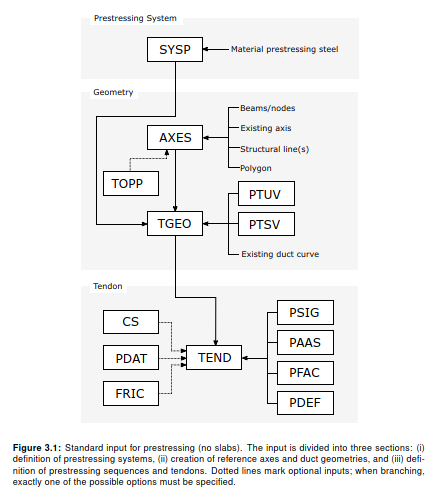Hi Guys, greetings from Toronto.
I’m new to Sofistik and trying to learn to work with Teddy. However, I’m having difficulties understanding Teddy Manuals for syntax and commands for Tendon Program defining tendons for a precast prestressed girder.
I got this example from a friend but still hard to fully get the point:
+PROG TENDON URS:3
HEAD
$ !!! MUE 0 BETA 0 DO AND AZ SHOULD MATCH
SYSP NOPS 12 MAT 2 ZV 2922 AZ 50^2*#PI/4 LITZ 1 MINR 5 BETA 0.3 MUE 0.000 ECC 0 SP 0 DO 1 $
AXES NOH 1 TYPE NODE 1 2
TOPP NOH 1 KIND NODE S 1,2 SP 1,2
TGEO NOG 1 NOH 1 NOPS 12
PTUV S U V DVS TYPE=SPAN
1 0 0 -
1.50 - 0 0
2 0 0 -
$ CS ICS2 10 IS FOR IMMEDIATE BOND
CS ICS1 10 ICS2 10
PDEF RI STR 1000 $ [KN]
$PDAT FTL 1.0 FTYP LINE $ FORCE TRANSITION LENGTH
TEND NOT 1 NOG 1 NTEN 1 LC 10
ECHO PLOT FULL
SCHH H2 0.18
PLOT GEOE NO 1 FACH 5 TYPG DUTE PCS 1
PLOT FACT NO 1 FACH 10
END
Could anyone help me decode these steps, particularly for TOPP?
Thanks
